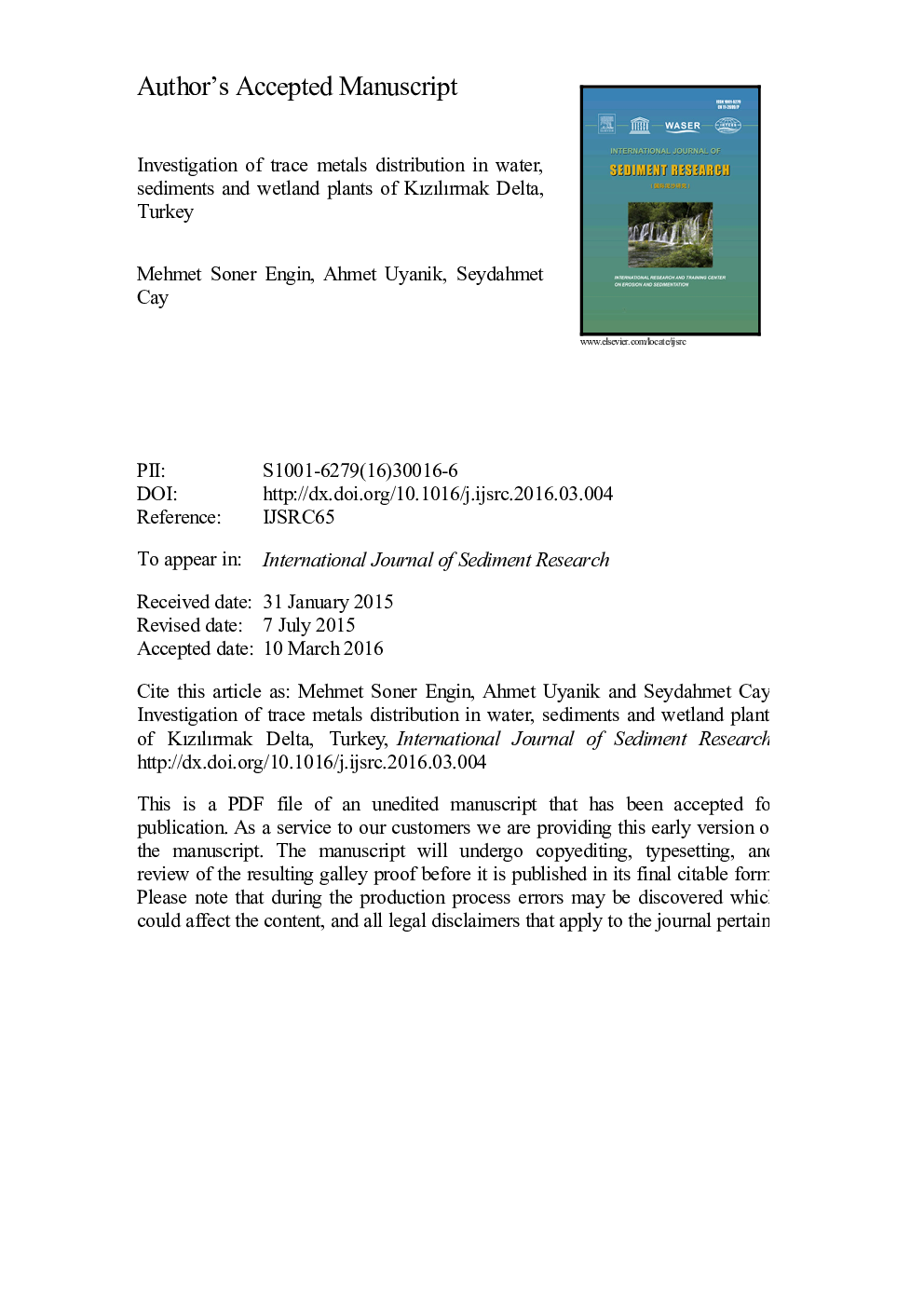| Article ID | Journal | Published Year | Pages | File Type |
|---|---|---|---|---|
| 8911203 | International Journal of Sediment Research | 2017 | 14 Pages |
Abstract
In this study, accumulation and distribution of Pb, Cu, Zn, Co, Ni, Mn and Fe in water, bottom sediments and four plant species (Myriophyllum verticillatum, Hydrocharis morsus-ranae, Nymphaea alba and Typha latifolia) were investigated in Ãernek Lake of Kızılırmak Delta. The Kızılırmak Delta is one of the largest natural wetlands of Turkey and it is protected by the Ramsar convention since 1993. Selected physico-chemical parameters such as pH, conductivity and dissolved oxygen and also trace metal concentrations were monitored in water. All the parameters obtained were found higher than that of the national standards for the protected lakes and reserves. The accumulated amounts of various trace metals in bottom sediments and wetland plants were found in the following order of Fe>Mn>Zn>Ni>Co>Cu>Pb and Fe>Mn>Zn>Ni>Co respectively. The historical trace metal intake of Myriophyllum verticillatum, Hydrocharis morsus-ranae, Typha latifolia and Nymphaea alba were obtained higher than that of the toxic metal levels and these plants may be accepted as accumulators for the detected trace metals and also bio-indicators in the historically polluted natural areas.
Related Topics
Physical Sciences and Engineering
Earth and Planetary Sciences
Geochemistry and Petrology
Authors
Mehmet Soner Engin, Ahmet Uyanik, Seydahmet Cay,
